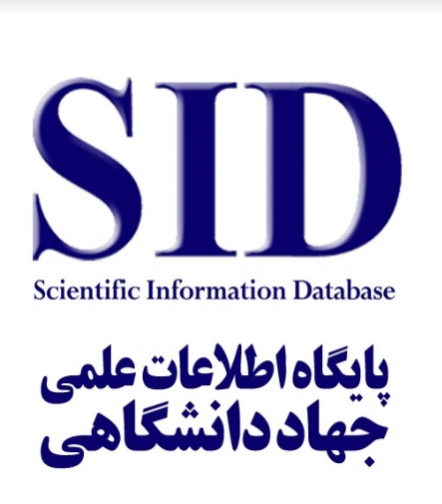اشباعناپذیری پولی و تأمین مالی بانک محور
کلمات کلیدی:
نرخ بهره, اشباعناپذیری پولی, تأمین مالی بانکمحور, هدایت اعتبار, بانکداری مشارکتیچکیده
در ادبیات اقتصادی تعاریف مختلفی از انواع نرخهای بهره (بین زمانی، درون زمانی، ذهنی و نیز پولی و بانکی) وجود دارد که معمولاً با تعبیر یکسانی از آنها یاد میشود. این در حالی است که نرخهای بهره، اثرات مختلفی بر متغیرهای کلان اقتصادی داشته و از نقشی ویژه در تنظیمگری فعالیتهای اقتصادی برخوردار هستند. از بعد نظری، تأمین مالی بانکمحور به شیوه کنونی به دلیل ویژگی اشباعناپذیری تقاضای پول و وجود انگیزههای سفتهبازی، نواقصی ایجاد میکند که به طور مشخص محدود کردن سطح اشتغال، تولید ناکارا و بروز تورم از مهمترین آثار آن است. این ویژگی در کنار وجود دو منشأ بین زمانی و درون زمانی بهره بانکی، نهتنها باعث عدم تعادل اقتصادی میشود بلکه فعالیتهای بخش حقیقی اقتصاد را حتی باوجود بازدهیهای بالاتر از بهره بانکی نیز غیرقابلتوجیه میسازد. ازاینرو، نگاهی عمیقتر به نقش انواع نرخ بهره در اقتصاد و بهطور خاص اثر بهره پولی، ضروری به نظر میرسد. مطالعه حاضر ابتدا توضیح میدهد که وجود نرخ بهره درون زمانی و نیز خاصیت اشباعناپذیری پولی، باعث عدم شکلگیری تعادل اشتغال کامل و بروز بیکاری پایدار میشود. سپس با استفاده از اصول اقتصاد خرد، ثابت میکند: 1- در شرایط وجود نرخ بهره پولی مثبت، اگرچه رشد و هدایت اعتبار میتواند رشد تولید را به همراه داشته باشد اما بهطور خاص به دلیل تأثیر تورم بر مصرفکننده و نیز به دلیل غلبه هزینه دریافت اعتبار بر منافع آن، ضامن رفاه اجتماعی (شامل نهاد بانک، بخش تولید و گروه مصرفکنندگان) نخواهد بود؛ 2- در صورتی هدایت اعتبار، دارای اثرات منفی نخواهد بود که نرخ بهره پولی، حداکثر برابر صفر باشد. با توجه به نتایج، مطالعه تأمین مالی بانکها در بستر بانکداری مشارکتی و به شکلی که منابع موردنیاز تولید از استخر نقدینگی موجود تأمین شود را بهعنوان راهکاری که میتواند ضامن افزایش تولید توأم با رفاه بالاتر مصرفکننده نهایی باشد، پیشنهاد میکند.
دانلودها
مراجع
Aduda, J., Magutu, P. O., & Wangu, G. M. (2012). The relationship between credit scoring practices by commercial banks and access to credit by small and medium enterprises in Kenya. International Journal of Business and Commerce, 1(11), 1–18.
Beck, T., Klapper, L. F., & Mendoza, J. C. (2010). The typology of partial credit guarantee funds around the world. Journal of Financial Stability, 6(1), 10–25.
Begum, R., Jabeen, A., Sanjana, T., Begum, T., & Sultana, T. (2024). Empowering growth: The role of commercial banks in financing small and medium enterprises (SMEs) in India. International Research Journal on Advanced Engineering and Management (IRJAEM), 2(4), 705–708.
Boulanouar, Z., Locke, S., & Holmes, M. (2020). An analysis of the SME–bank match made in heaven: The case of New Zealand main banks and their relationship-managed SMEs. Qualitative Research in Financial Markets, 12(4), 391–411.
Corredera-Catalán, F., diPietro, F., & Trujillo-Ponce, A. (2021). Post-COVID-19 SME financing constraints and the credit guarantee scheme solution in Spain. Journal of Banking Regulation, 22(3), 250–260.
Erdogan, A. I. (2018). Factors affecting SME access to bank financing: An interview study with Turkish bankers. Small Enterprise Research, 25(1), 23–35.
Erdogan, A. I. (2019). Determinants of perceived bank financing accessibility for SMEs: Evidence from an emerging market. Economic Research-Ekonomska Istraživanja, 32(1), 690–716.
ESCAP, United Nations. (2022). Small and medium-sized enterprises lending approaches: The role of banks in Asia. United Nations Economic and Social Commission for Asia and the Pacific.
Fufa, F. G. (2016). Determinants of access to credit and credit source choice by micro, small and medium enterprises in Nekemte, Ethiopia. International Journal of African and Asian Studies, 28(2), 11–27.
Hardik, N. (2024). Digitalisation promotes adoption of soft information in SME credit evaluation: The case of Indian banks. Digital Finance, 6(1), 23–54.
Haron, H., Said, S. B., Jayaraman, K., & Ismail, I. (2013). Factors influencing small medium enterprises (SMEs) in obtaining loan. International Journal of Business and Social Science, 4(15), 182–195.
Hossain, M., Yoshino, N., & Tsubota, K. (2023). Sustainable financing strategies for the SMEs: Two alternative models. Sustainability, 15(11), 8488.
Hue, L. T. (2020). Factors affecting the access to bank credit of SMEs in northeastern region, Vietnam. International Journal of Business and Management, 15(7), 83–99.
Kavitha, H., & Gopinath, R. (2020). Role of commercial banks financing and explaining towards the small-scale firms in Tamil Nadu: An empirical investigation of entrepreneur’s perspectives. International Journal of Management (IJM), 11(10), 2172–2182.
Khan, S. N. (2024). How bank-specific factors affect access to financing for small and medium enterprises: Evidence from an emerging economy. International Journal of Finance & Economics, 29(2), 2095–2115.
Lu, S., Glushenkova, M., Huang, W., & Matthews, K. (2024). SME relationship banking and loan contracting: Survey-based evidence from China. SSRN Electronic Journal.
Mabhungu, I. (2011). Factors influencing micro and small enterprises’ access to finance since the adoption of multi-currency system in Zimbabwe. Journal of Economics and Sustainable Development, 2(4), 217–230.
Muthaiyah, S., Zaw, T. O. K., Anbanathen, K. S. M., & Nguyen, L. (2022). Digital transformation for SME banks. In International Conference on Technology and Innovation Management (ICTIM 2022) (pp. 364–374). Atlantis Press. Nitani, M., & Riding, A. (2014). Risk factors and the Canada small business financing program. Journal of Small Business & Entrepreneurship, 27(3), 251–274.
Nosrati Barandagh, B., Toloei Ashlaghi, A., Sadeh, E., & Amini Sabeq, Z. (2021). Design financing model for small and medium enterprises (SMEs) with (DANP) approach. Investment Knowledge, 10(39), 161–188. (In Persian).
Olaore, G. O., Adejare, B. O., & Udofia, E. E. (2020). Prospects and challenges of entrepreneurship internationalization on the competitiveness of SMEs. Asia Pacific Journal of Innovation and Entrepreneurship, 14(3), 303–315.
Pallegedara, A. (2017). Factors affecting SMEs' access to bank finance: An evidence from Sri Lanka. International Journal of Economics and Business Research, 13(1), 30–42.
Parliamentary Research Center. (2015). Small and medium enterprise financing model: An analysis of the concept and importance of small and medium enterprise financing. Deputy for Economic Research, Economic Studies, 1–42. (In Persian).
Pham, H. D. (2017). Determinants of new small and medium enterprises (SMEs) access to bank credit: Case study in the Phu Tho Province, Vietnam. International Journal of Business and Management, 12(7), 83–99.
Roy, P. K., & Shaw, K. (2021). A multicriteria credit scoring model for SMEs using hybrid BWM and TOPSIS. Financial Innovation, 7(1), 77.
Safi Dastjerdi, D., Tayebi, K., & Elahi, N. (2021). Loan interest rate uncertainty and financing SMEs listed in Tehran Stock Exchange. Journal of Asset Management and Financing, 9(2), 1–20. (In Persian)
Seifollahi, N., & Ebrahimi Kharajoo, V. (2022). Investigating social banking in the world for small industries and providing a solution on how to generalize it in Ardabil. Journal of Financial Economics, 16(2), 75–103. (In Persian).
Shen, C. H., Chu, H., & Wang, Y. C. (2012). Who furls the umbrella on rainy days? The role of bank ownership type and bank size in SME lending. Emerging Markets Finance and Trade, 48(2), 184–199.
Silivestru, D. R. (2012). Bank loans and small firm financing in Romania. Annales Universitatis Apulensis: Series Oeconomica, 14(1), 178–187.
Sojoodi, S., & Jalili, A. (2022). Islamic finance for small and medium enterprises: Challenges and solutions. Journal of Islamic Economics and Banking, 11(39), 2. (In Persian).
Tamizifar, M., Tohidi, M., & Shekari Khiadani, M. (2022). Identifying and ranking strategies to improve the access of small and medium-sized enterprises to banking services in Iran. Journal of Entrepreneurship Development, 15(4), 627–639. (In Persian).
Thathsarani, U. S., & Jianguo, W. (2022). Do digital finance and the technology acceptance model strengthen financial inclusion and SME performance? Information, 13(8), 390. World Bank, Independent Evaluation Group. (2019). World Bank Group support for small and medium enterprises. World Bank.
Yoshino, N., Taghizadeh-Hesary, F., Charoensivakorn, P., & Niraula, B. (2015). SME credit risk analysis using bank lending data: An analysis of Thai SMEs (ADBI Working Paper No. 536). Asian Development Bank Institute.



